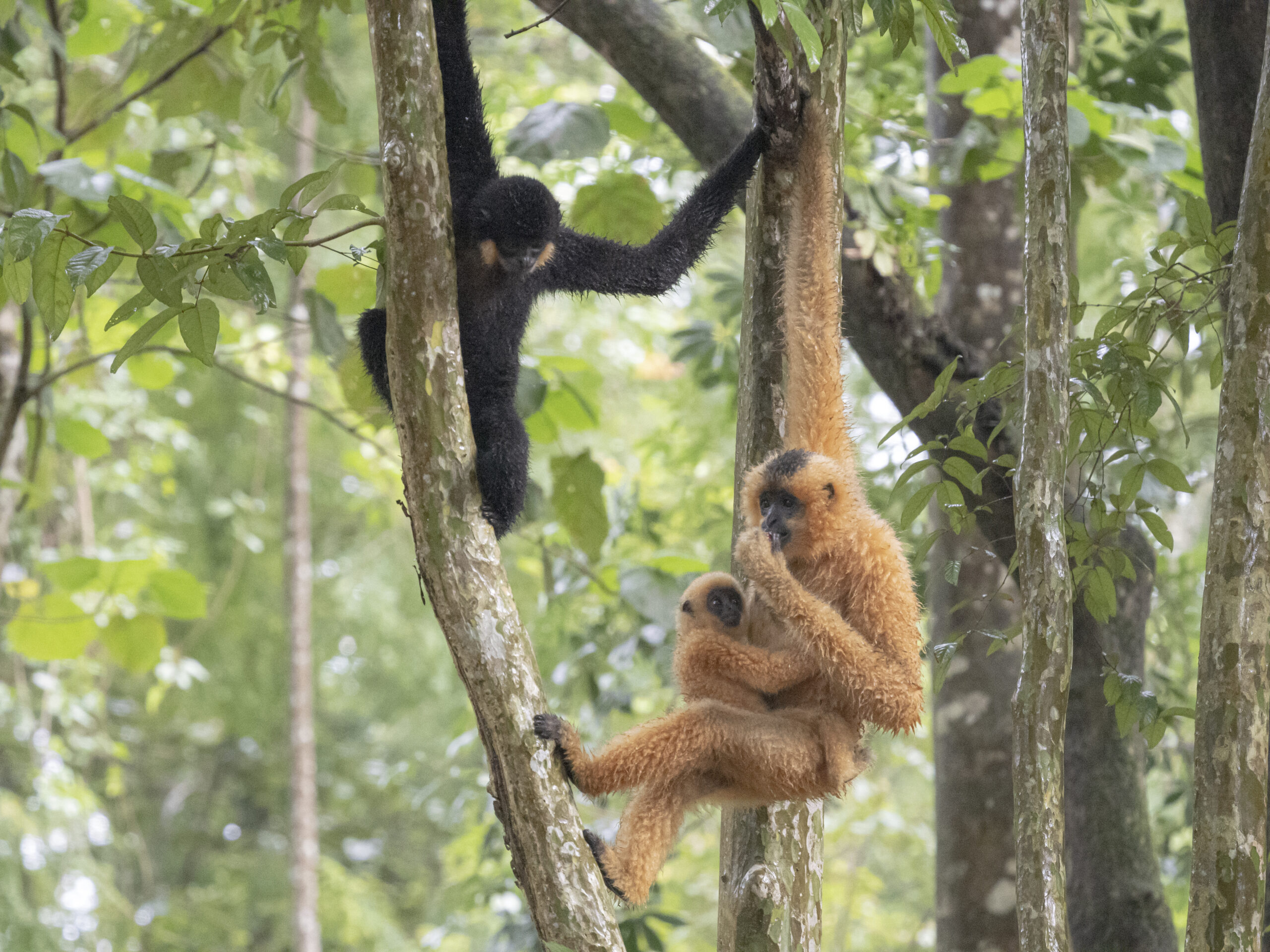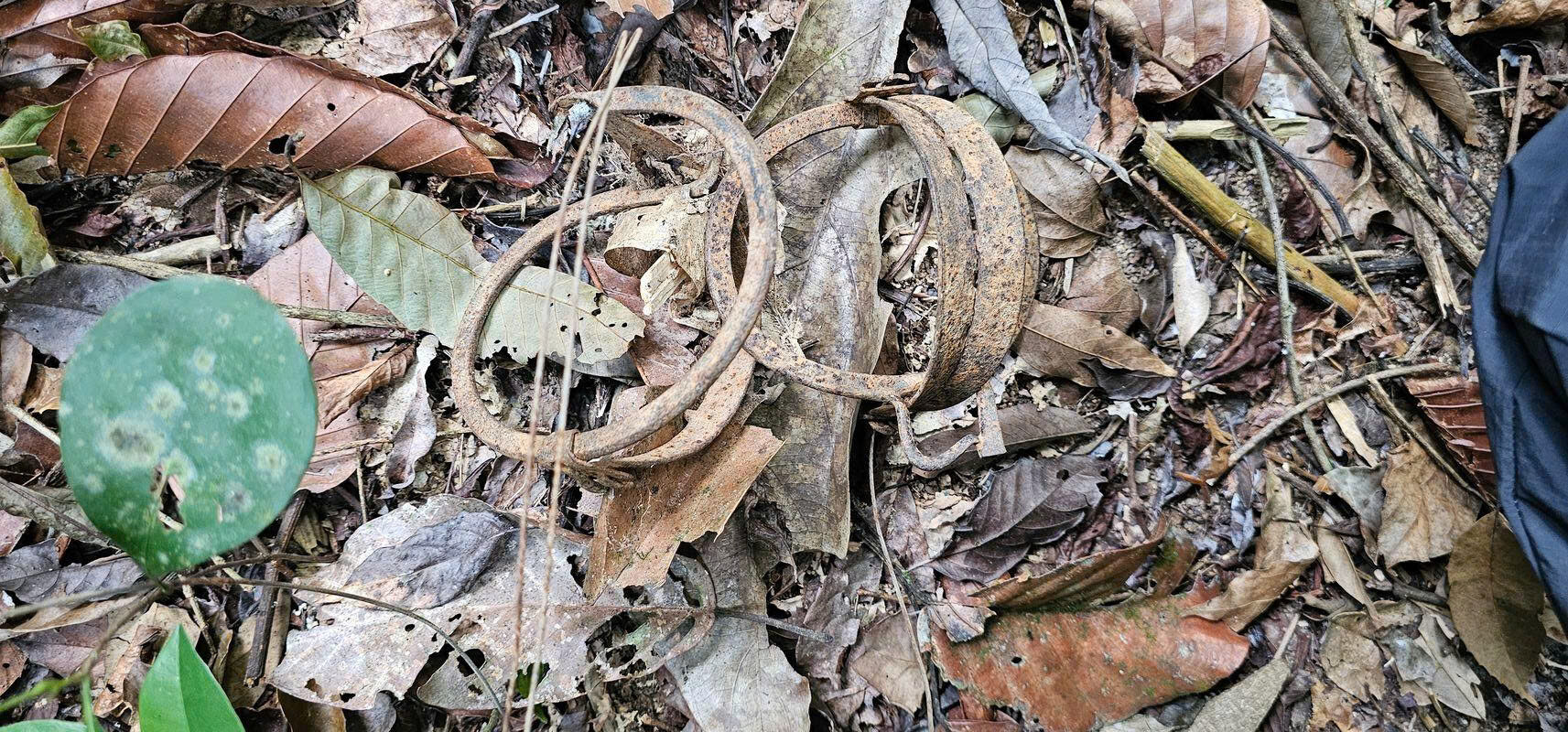Good News for Gibbon Conservation in Vietnam: 6 Troops of Southern Yellow-Cheeked Gibbons Discovered in Deo Ca – Tay Hoa – Song Hinh
In April, CTNC first recorded two troops of the Southern Yellow-Cheeked Gibbon (Nomascus gabriellae) in the Deo Ca – Hon Nua area, providing the first scientific evidence of this rare species’ presence in Phu Yen (now part of Dak Lak province). Following this discovery, during a second survey in early August 2025 in the Tay Hoa and Song Hinh special-use forests, the research team recorded an additional four new gibbon troops. Thus, after just two rapid surveys, a total of six troops of Southern Yellow-Cheeked Gibbons, with an estimated minimum of 15 individuals, have been confirmed in the area – a significant effort that reveals an expansion of the species’ known distribution in Vietnam.

“The discovery of four more troops of Southern Yellow-Cheeked Gibbons in the Deo Ca – Tay Hoa – Song Hinh area is clear evidence that this region still holds precious, intact forests. This is not only a source of local pride but also an opportunity for us to develop this forest area into a significant national park for Vietnam.”
This is a finding of exceptional scientific and conservation importance because, prior to this, there had been no official records of this rare gibbon species in the forest areas managed by the Deo Ca, Tay Hoa, and Song Hinh special-use and protection forest management boards. This means that the newly discovered troops add a new population known to science, while also affirming the crucial role of the South-Central forest corridors in sustaining this endemic Indochinese primate.

Photo: Southern Yellow-Cheeked Gibbon (Nomascus gabriellae)
The Southern Yellow-Cheeked Gibbon (Nomascus gabriellae) is one of the primate species endemic to the Indochina region, primarily distributed in the South-Central region (Khanh Hoa, Dong Nai), the Central Highlands (Gia Lai, Dak Lak, Lam Dong) of Vietnam, and eastern Cambodia. This gibbon species is notable for its distinct sexual dimorphism: males are entirely black with reddish-brown cheeks, while females are light yellow with a black crest on their heads.
Like other gibbon species, the Southern Yellow-Cheeked Gibbon lives in small, tightly-knit family groups, typically consisting of a monogamous pair and their offspring. Their diet mainly consists of fruits, leaves, and flowers. They reproduce on average once every 27 months, with a gestation period of 7–8 months, giving birth to a single infant. They reach maturity after about 5 years in captivity and 7–8 years in the wild. Their loud, far-reaching morning songs are a characteristic means of communication and territory marking, and also help researchers locate populations in the wild.
According to a 2023 report on gibbon conservation by Fauna & Flora International (FFI), the Southern Yellow-Cheeked Gibbon is still distributed in the forests of the South-Central and Southeastern regions. However, these populations are severely fragmented and rapidly declining. Scientists have used methods such as acoustic recording or direct listening at listening posts to determine the distribution and structure of gibbon troops, thereby analyzing and estimating the number of troops in the wild. The total estimated number of troops nationwide is about 1,147. The largest population is recorded in Cat Tien National Park (Dong Nai – Lam Dong – Binh Phuoc), estimated at 325 troops. This is followed by the Langbiang Plateau forest area, which includes Chu Yang Sin National Park and Bidoup-Nui Ba National Park, with 183 troops. Lastly, Bu Gia Map National Park (Binh Phuoc) has about 124 troops. Our preliminary results have added another six troops to this count. During our surveys, local people and forest rangers in all three protection and special-use forest management boards reported other locations where these rare gibbons still exist, which we have not yet had time to investigate further.
Not limited to Vietnam, this gibbon species is also found in eastern Cambodia, particularly in Mondulkiri and Ratanakiri provinces. However, studies indicate that the Cambodian population is also declining rapidly due to hunting for bushmeat and the illegal trade. There is currently no official global census, but many experts believe that only a few thousand individuals remain in the wild – a critically low number for an endemic species that plays a vital role in the tropical forest ecosystem.
According to the 2023 IUCN Red List, the Southern Yellow-Cheeked Gibbon is classified as Endangered (EN). The 2024 Vietnam Red Data Book also lists the species at the same level. The population size is estimated to have declined by more than 50% over the last 45 years. The species faces severe threats. Hunting and illegal trade are the biggest risks: many individuals are shot, dried in the forest, or boiled down for traditional medicine to be sold at high prices. Surviving infants are often captured for the pet trade or smuggled across borders. Even in the survey area, forest rangers and local residents report that clandestine hunting of gibbons still occurs due to high demand from traders, despite their awareness that gibbons are in Group IB of Decree 84/2021/ND-CP and specially protected under Decree 64/2019/ND-CP. For example, compared to the case of the white pheasant, Mr. Thanh in Nghe An could be sentenced to 5-10 years in prison for trading, transporting, or hunting just 3 to 7 individuals of a mammal species (like gibbons), or 7 to 10 individuals of a bird (like the white pheasant) or reptile (like the golden coin turtle). Therefore, the risk of criminal prosecution for hunting, trading, or keeping gibbons and doucs is higher, even with fewer individuals involved compared to birds or reptiles.
Furthermore, forest loss due to logging, agricultural expansion, and hydropower construction has shrunk their natural habitat, leaving gibbon troops fragmented and unable to connect genetically. This fragmentation not only reduces population numbers but also severely threatens the species’ genetic diversity, making them more vulnerable to disease, climate change, and other environmental pressures.


Faced with these challenges, to protect the newly discovered gibbon troops as well as existing populations, the Center for Technology and Nature Conservation (CTNC) has implemented and planned long-term conservation efforts here.
First, CTNC has organized SMART (Spatial Monitoring and Reporting Tool) training courses for 67 forest rangers, contracted households, and technical staff at the three management boards of Deo Ca, Song Hinh, and Tay Hoa. SMART is a convenient tool that helps standardize the process of collecting, storing, and analyzing patrol data, thereby improving the effectiveness of monitoring endangered species.
In parallel, we provide ongoing technical support to forest patrol teams organized regularly to remove snares, prevent encroachment and deforestation, and coordinate with authorities to apprehend illegal hunters. CTNC also places special emphasis on community education, implementing numerous legal awareness programs and integrating wildlife conservation content into schools. The center’s Deputy Director, Mr. Pham Van Thong, shared during a training session:
“Nurturing a love for animals in young people is incredibly important, because if children learn to love wildlife, they will learn to love people too.”

In the long term, CTNC and its partners are building a scientific basis to propose upgrading the Deo Ca – Song Hinh – Tay Hoa area, along with the adjacent, continuous protection forest area in Khanh Hoa province, into a new national park, with a potential area of up to 130,000 hectares. If successful, this would become the largest national park in Vietnam, serving as a pillar for the conservation of endangered primate species, especially the Southern Yellow-Cheeked Gibbon and the recently discovered Black-shanked Douc Langur by CTNC experts.




Share by: